NCERT Summary: Human Health and Diseases | Science & Technology for UPSC CSE PDF Download
| Table of contents |

|
| Introduction |

|
| Common Diseases in Humans |

|
| Immunity |

|
| AIDS |

|
| Cancer |

|
| Drugs and Alcohol Abuse |

|
Introduction
- Health is not merely the absence of disease or physical fitness. It is defined as a state of complete physical, mental, and social well-being.
- Being healthy enhances work efficiency, leading to increased productivity and economic prosperity. It also contributes to greater longevity and reduces infant and maternal mortality.
Components of Health
- Genetic Disorders: These are deficiencies a child is born with or inherits from parents. Examples include conditions like cystic fibrosis or hemophilia.
- Infections: Diseases caused by pathogens such as bacteria, viruses, fungi, or parasites. Common examples include flu, tuberculosis, or malaria.
- Lifestyle Factors: These include the quality of food and water consumed, the amount of rest and exercise, and various habits like smoking or excessive drinking.
Maintaining Good Health
- Balanced Diet: A diet that includes the right proportions of carbohydrates, proteins, fats, vitamins, and minerals.
- Personal Hygiene: Practices like regular handwashing, dental care, and bathing to prevent infections.
- Regular Exercise: Engaging in physical activities like walking, running, yoga, or sports to keep the body fit.
- Yoga: A practice that combines physical postures, breathing exercises, and meditation to promote overall health.
- Aware of diseases and their impacts, along with preventive measures like vaccination, proper waste disposal, and food/water hygiene.
Infectious and Non-Infectious Diseases
- Diseases can be broadly classified into infectious and non-infectious categories based on their transmission and causes.
- Infectious diseases are those that can be easily transmitted from one person to another. Examples include the common cold, influenza, tuberculosis, and more severe diseases like HIV/AIDS.
- Non-infectious diseases are not transmitted between individuals and can be caused by various factors, including genetics, lifestyle, and environmental factors. Cancer, heart disease, and diabetes fall under this category.
Common Diseases in Humans
Various organisms, including bacteria, viruses, fungi, protozoans, and helminths, can cause diseases in humans. These disease-causing organisms are known as pathogens. Most parasites are considered pathogens because they harm their hosts by living in or on them.
Pathogens can enter our bodies through different means, multiply, and disrupt normal vital activities, leading to morphological and functional damage. They must adapt to life within the host's environment. For instance, pathogens that enter the gut must survive in the stomach's low pH and withstand various digestive enzymes.
1. Typhoid
- Salmonella typhi is a harmful bacterium that causes typhoid fever in humans. These bacteria usually enter the body through contaminated food and water and spread to other organs via the bloodstream.
- Common symptoms include: Sustained high fever(39° to 40°C), Weakness, Stomach pain, Constipation, Headache, Loss of appetite
- In severe cases, typhoid fever can lead to intestinal perforation and death.
- Typhoid fever can be confirmed through the Widal test.
- Mary Mallon, also known as Typhoid Mary, was a cook who unknowingly spread typhoid fever for several years through the food she prepared.
2. Pneumonia
- Pneumonia is caused by bacteria like Streptococcus pneumoniae and Haemophilus influenzae.
- These bacteria infect the alveoli(air-filled sacs) in the lungs. The infection causes the alveoli to fill with fluid, leading to severe respiratory problems.
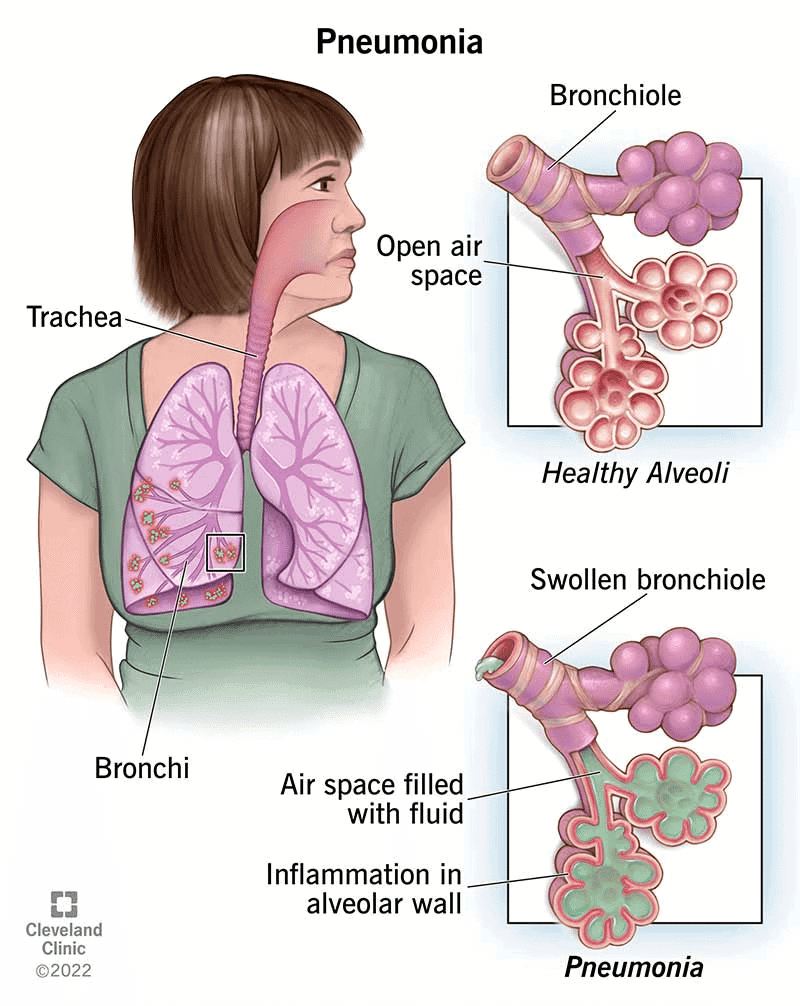
- Common symptoms include: Fever, Chills, Cough, Headache
- In severe cases, the lips and fingertips may turn gray or bluish.
- Transmission: A healthy person can catch pneumonia by inhaling droplets or aerosols from an infected person. Sharing glasses and utensils with an infected person can also spread the infection.
Other Bacterial Diseases:
- Dysentery
- Plague
- Diphtheria
3. Common Cold
- Rhino viruses are a group of viruses that cause the common cold, one of the most easily spread human illnesses. These viruses infect the nose and respiratory passage but do not affect the lungs.
- Common cold symptoms include: Nasal congestion and discharge, sore throat, hoarseness, cough, headache, tiredness
- These symptoms typically last for 3 to 7 days.
- Transmission: The common cold spreads through droplets from an infected person’s cough or sneeze. It can also spread through contaminated objects such as pens, books, cups, doorknobs, and computer keyboards or mice.
4. Malaria
Caused by: Plasmodium (a tiny protozoan).
Types of Plasmodium responsible for different types of malaria:
- P. vivax
- P. malariae
- P. falciparum (causes the most severe and potentially fatal form of malaria).
Life Cycle of Plasmodium
- Entry into Human Body: Plasmodium enters through the bite of an infected female Anopheles mosquito as sporozoites(infectious form).
- Multiplication in the Liver: The parasites multiply within the liver cells.
- Attack on Red Blood Cells (RBCs): Plasmodium attacks and multiplies within RBCs, causing their rupture.
- Release of Haemozoin: The rupture of RBCs releases haemozoin, a toxic substance that causes chills and high fever every three to four days.
- Transmission to Mosquito: When a female Anopheles mosquito bites an infected person, the parasites enter the mosquito’s body and undergo further development.
- Development in Mosquito: The parasites multiply within the mosquito to form sporozoites, which are stored in the mosquito’s salivary glands.
- Transmission to Human: When the mosquito bites another human, the sporozoites are introduced, continuing the cycle.
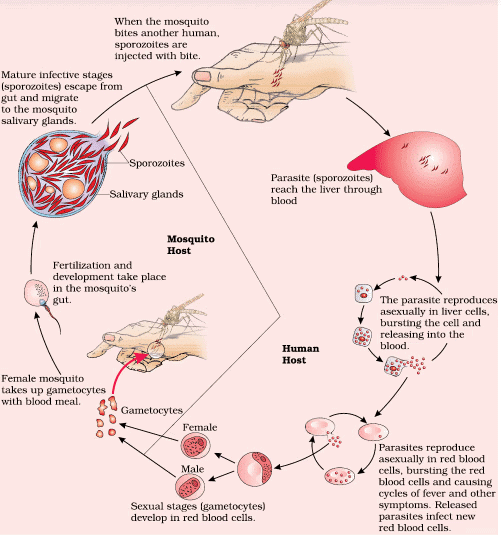 Life Cycle of Plasmodium
Life Cycle of Plasmodium
Note: The malarial parasite requires two hosts—humans and mosquitoes—to complete its life cycle. The female Anopheles mosquito serves as both the vector (transmitting agent) and host.
5. Amoebiasis/ Amoebic Dysentery
- Entamoeba histolytica is a parasite that lives in the large intestine and causes a disease called amoebiasis, which is also known as amoebic dysentery.
- Symptoms: People infected with this parasite may experience symptoms such as: Constipation, Abdominal pain and cramps, Stools that contain excess mucous and blood clots.
- Transmission : The parasite is transmitted by houseflies, which carry it from the feces of an infected person to food and food products, contaminating them. Contaminated drinking water and food are the main sources of infection.
6. Ascarisis
- Ascaris is a common roundworm that causes a disease called ascariasis. Symptoms include internal bleeding, muscular pain, fever, anemia, and blockage of the intestinal passage.
- The eggs of Ascaris are excreted in the feces of infected individuals, contaminating soil, water, and plants. A healthy person can become infected by ingesting contaminated water, vegetables, fruits, etc.
7. Elephantiasis / Filariasis
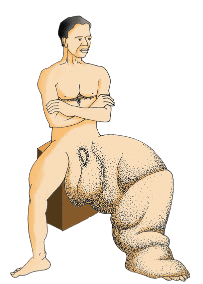 Elephantiasis
Elephantiasis
- Wuchereria(such as W. bancrofti and W. malayi) is a type of filarial worm that causes chronic inflammation in the lymphatic vessels, usually in the lower limbs. This condition is known as elephantiasis or filariasis. The genital organs can also be affected, leading to severe deformities.
- Wuchereria is transmitted through the bite of infected female mosquitoes.
8. Fungal Infections
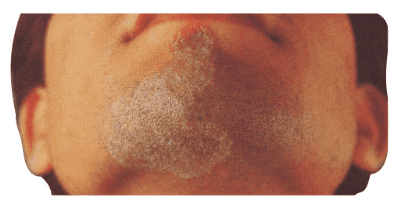 Ringworm affected area of the skin
Ringworm affected area of the skin
Ringworm is caused by fungi from the genera Microsporum, Trichophyton, and Epidermophyton. These fungi thrive in warm and moist environments, making areas like skin folds (such as the groin and between the toes) prime locations for infection.
- Soil: Fungi can be present in the soil, and direct contact with contaminated soil can lead to infection.
- Personal Items: Using towels, clothes, or even combs that belong to an infected person can spread the fungi.
Symptoms of Ringworm
- Dry, Scaly Lesions: These can appear on various parts of the body, including the skin, nails, and scalp.
- Itching: Intense itching often accompanies the lesions.
Prevention and Control of Infectious Diseases
(i) Personal Hygiene
- Body Cleanliness: Keeping the body clean is essential to prevent the spread of infectious agents.
- Safe Consumption: Ensuring clean drinking water, food, vegetables, and fruits helps in avoiding infections.
(ii) Public Hygiene
- Waste Disposal: Proper disposal of waste and excreta is crucial to prevent contamination.
- Water Reservoirs: Periodic cleaning and disinfection of water reservoirs, pools, cesspools, and tanks is necessary.
- Public Catering: Observing standard hygiene practices in public catering helps in avoiding foodborne infections.
(iii) Prevention of Air-borne Diseases
In cases of air-borne diseases like pneumonia and common cold, avoiding close contact with infected individuals or their belongings is important.
(iv) Prevention of Insect-borne Diseases
- Vector Control: Controlling or eliminating insect vectors and their breeding places is crucial. This includes avoiding stagnant water, regular cleaning of household coolers, and using mosquito nets.
- Biological Control: Introducing fish like Gambusia in ponds to feed on mosquito larvae is an effective biological control method.
- Chemical Control: Spraying insecticides in ditches, drainage areas, and swamps helps in controlling mosquito populations.
- Physical Barriers: Installing wire mesh on doors and windows prevents the entry of mosquitoes.
Advancements in Biological Science
- Vaccines and Immunization: Vaccines have played a crucial role in eradicating diseases like smallpox and controlling others like polio, diphtheria, pneumonia, and tetanus.
- Biotechnology: Advancements in biotechnology are leading to the development of newer and safer vaccines.
- Antibiotics and Drugs: The discovery of antibiotics and various other drugs has significantly improved the treatment of infectious diseases.
Immunity
Every day, we encounter numerous infectious agents, but only a small fraction of these exposures lead to illness. This is because our bodies possess the ability to defend against most of these foreign invaders. This capacity to combat disease-causing organisms, facilitated by the immune system, is known as immunity. There are two main types of immunity:
(i) Innate Immunity
Innate immunity is a non-specific defense mechanism present at birth. It functions by establishing various barriers to prevent foreign agents from entering the body. Innate immunity comprises four types of barriers:
- Physical barriers: The skin acts as the primary barrier, preventing the entry of microorganisms. Additionally, the mucus coating of the epithelial lining in the respiratory, gastrointestinal, and urogenital tracts helps trap microbes trying to enter the body.
- Physiological barriers: Substances like stomach acid, saliva in the mouth, and tears from the eyes inhibit microbial growth.
- Cellular barriers: Specific types of white blood cells, such as polymorphonuclear leukocytes (neutrophils) and monocytes, along with natural killer cells (a type of lymphocyte) in the blood and macrophages in tissues, can phagocytose (engulf and destroy) microbes.
- Cytokine barriers: Cells infected by viruses secrete proteins called interferons, which help protect non-infected cells from further viral infection.
(ii) Acquired Immunity
Acquired immunity is specific to pathogens and is characterized by memory. When the body encounters a pathogen for the first time, it mounts a weak initial response called the primary response. Upon subsequent exposure to the same pathogen, a much stronger response known as the secondary or anamnestic response occurs. This heightened response is due to the body's memory of the first encounter.
Key Players: B-Lymphocytes and T-Lymphocytes
- B-lymphocytes produce antibodies, which are proteins that help fight off pathogens.
- T-lymphocytes assist B-lymphocytes in producing these antibodies but do not secrete antibodies themselves.
Antibody Structure
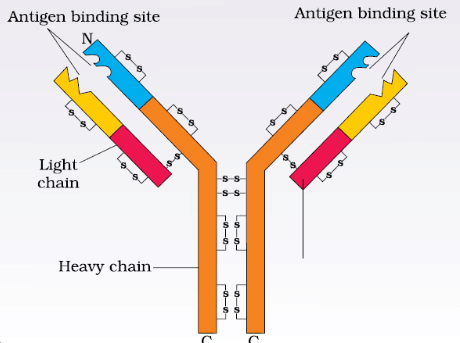 Structure of an Antibody
Structure of an Antibody
Two light chains (small) &Two heavy chains (longer). Antibodies are often represented as H2L2, indicating the two heavy and two light chains.
Types of Antibodies
Some different types of antibodies produced in the body include: IgA, IgM, IgE & IgG
Because these antibodies are found in the blood, the response is also known as humoral immune response.
Types of Acquired Immune Response
- Antibody-Mediated Response: This involves the production of antibodies by B-lymphocytes in response to pathogens.
- Cell-Mediated Immune Response (CMI): This is mediated by T-lymphocytes and does not involve antibodies.
Importance of Tissue and Blood Group Matching in Transplants
When organs such as the heart, eye, liver, or kidney fail, transplantation becomes necessary to restore normal function. However, not just any organ can be used for transplantation. The reasons for this include:
- Tissue Matching: Organs must be matched for tissue compatibility to prevent rejection.
- Blood Group Matching: Donor and recipient blood groups must be compatible.
Even with matching, patients often need to take immunosuppressants for life to prevent rejection of the transplanted organ. The body has the ability to differentiate between 'self' and 'non-self', and the cell-mediated immune response is responsible for rejecting grafts that are recognized as 'non-self'.
Active and Passive Immunity
When a host is exposed to antigens, which may be in the form of living or dead microbes or other proteins, antibodies are produced in the host body. This type of immunity is called active immunity. Active immunity is slow and takes time to give its full effective response. Injecting the microbes deliberately during immunisation or infectious organisms gaining access into body during natural infection induce active immunity.
Active Immunity
- Active immunity occurs when the body is exposed to antigens, such as living or dead microbes or other proteins, and produces its own antibodies in response.
- This process takes time to build up and provide a full response to the threat.
- Active immunity can be induced through immunization, where microbes are deliberately injected, or through natural infection, when infectious organisms enter the body.
Passive Immunity
- Passive immunity occurs when ready-made antibodies are directly given to the body to protect against foreign agents.
- For example,mother's milk is crucial for newborn infants because it contains colostrum, a yellowish fluid rich in antibodies (IgA) that helps protect the infant.
- Additionally, during pregnancy, the fetus receives some antibodies from the mother through the placenta, which is another example of passive immunity.
Vaccination and Immunisation
- Vaccination and immunisation rely on the immune system's ability to remember past infections. Vaccines contain antigenic proteins from pathogens or inactivated/weakened pathogens. When introduced into the body, these stimulate the production of antibodies that can neutralise the pathogens during actual infections. Vaccines also create memory B and T cells that recognise and respond to the pathogen more quickly in future exposures.
- Active Immunisation: In cases where a rapid immune response is necessary, such as with tetanus, preformed antibodies or antitoxins are injected. This is also done in instances of snakebites, where injections contain preformed antibodies against snake venom. This method is known as passive immunisation.
- Recombinant DNA Technology in Vaccine Production: Recombinant DNA technology enables the production of antigenic polypeptides of pathogens in bacteria or yeast. This method allows for large-scale production of vaccines, making them more widely available for immunisation. An example is the hepatitis B vaccine produced from yeast.
Allergies
Have you ever visited a new place and suddenly started sneezing or wheezing for no apparent reason, only to feel better once you left? Some of us are sensitive to certain particles in the environment. This reaction could be due to an allergy to substances like pollen or dust mites, which vary from place to place.
The immune system's exaggerated response to specific antigens in the environment is known as an allergy. The substances that trigger this immune response are called allergens. When exposed to these allergens, the body produces antibodies of the IgE type. Common allergens include dust mites, pollen, and animal dander.
Causes and Symptoms
- Causes: Allergies occur when the immune system reacts strongly to substances in the environment, such as dust mites, pollen, or pet dander.
- Symptoms: Common symptoms of allergic reactions include sneezing, watery eyes, a runny nose, and difficulty breathing.
Mechanism
- Allergies are caused by the release of chemicals like histamine and serotonin from mast cells in the body.
- These chemicals trigger the symptoms associated with allergies.
- To determine the cause of an allergy, patients are exposed to small doses of potential allergens, and their reactions are observed.
Treatment
- Medications such as anti-histamines, adrenalin, and steroids can help reduce allergy symptoms quickly.
- In recent times, lifestyle changes have led to a decrease in overall immunity and increased sensitivity to allergens.
- More children in urban areas of India are experiencing allergies and asthma due to environmental sensitivities.
- This trend may be linked to the overly protective environments some children are raised in during their early years.
Autoimmunity
Memory-based acquired immunity in higher vertebrates has evolved the capacity to differentiate foreign organisms, such as pathogens, from self-cells. While the exact basis for this ability remains unclear, two important corollaries can be understood:
- Distinction Between Foreign Molecules and Organisms: Higher vertebrates possess the capability to distinguish between foreign molecules and foreign organisms. Much of experimental immunology focuses on this aspect.
- Autoimmune Diseases: In some cases, due to genetic or other unknown factors, the body mistakenly attacks its own self-cells. This leads to damage and is termed an autoimmune disease. An example of such a condition is rheumatoid arthritis, which affects many individuals in society.
Immune System in the Body
The human immune system is a complex network of organs, tissues, cells, and molecules that work together to defend the body against harmful invaders. It has the unique ability to recognize, respond to, and remember foreign substances, playing a crucial role in various processes including allergic reactions, autoimmune diseases, and organ transplantation.
Lymphoid Organs
Lymphoid organs are where lymphocytes (a type of white blood cell) are produced, mature, and proliferate.
 Diagrammatic representation of Lymph nodes
Diagrammatic representation of Lymph nodes
Primary Lymphoid Organs:
- Bone Marrow: The main site for the production of all blood cells, including lymphocytes. Produces all blood cells, including lymphocytes.
- Thymus: A lobed organ located near the heart and beneath the breastbone, where T-lymphocytes mature. The thymus is large at birth but shrinks with age, becoming much smaller by puberty. Located near the heart, it is larger at birth and shrinks with age, providing a site for T-lymphocyte development.
Secondary Lymphoid Organs:
- Spleen: A large, bean-shaped organ that filters the blood, trapping microorganisms and storing red blood cells. Filters blood, trapping microorganisms, and contains a reservoir of red blood cells.
- Lymph Nodes: Small structures along the lymphatic system that trap microorganisms and antigens, activating lymphocytes to initiate an immune response.
- Tonsils: Located in the throat, they help trap pathogens entering through the mouth and nose.
- Peyer’s Patches: Small lymphoid tissues in the lining of the small intestine that monitor intestinal bacteria.
- Appendix: A small pouch connected to the large intestine, thought to play a role in immune function.
Mucosa-Associated Lymphoid Tissue (MALT): Located in the lining of major tracts (respiratory, digestive, and urogenital), MALT constitutes about 50% of the lymphoid tissue in the human body.
AIDS
AIDS stands for Acquired Immuno Deficiency Syndrome. It refers to the weakening of the immune system acquired during a person's lifetime, indicating that it is not a congenital condition. 'Syndrome' signifies a group of symptoms.
AIDS was first identified in 1981, and over the past twenty-five years, it has spread globally, causing the deaths of more than 25 million people. The disease is caused by the Human Immuno deficiency Virus (HIV), which belongs to a group of viruses known as retroviruses. These viruses have an envelope that contains their RNA genome.
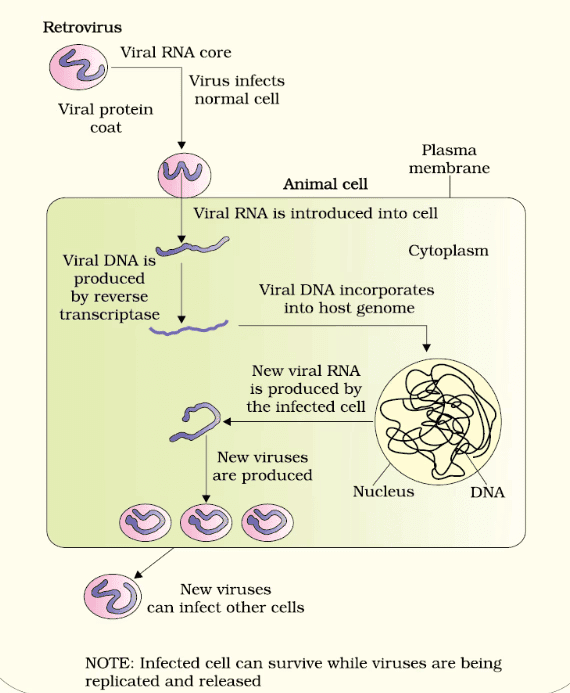 Replication of retrovirus
Replication of retrovirus
Transmission of HIV Infection
- Sexual Contact: HIV can be transmitted through sexual contact with an infected person.
- Contaminated Blood: Transfusion of contaminated blood and blood products can also spread HIV.
- Shared Needles: Sharing infected needles, particularly among intravenous drug users, is a common mode of transmission.
- From Mother to Child: HIV can be transmitted from an infected mother to her child through the placenta.
Individuals at high risk of contracting HIV include: People with multiple sexual partners, Intravenous drug users, Individuals requiring frequent blood transfusions, Children born to HIV-infected mothers
It is important to note that HIV/AIDS is not spread through casual contact or touch; it is transmitted through body fluids. Therefore, it is crucial for the physical and psychological well-being of HIV/AIDS-infected individuals that they are not isolated from their families and society.
There is a time lag between HIV infection and the appearance of AIDS symptoms, which can vary from a few months to many years (usually 5-10 years).
HIV Replication and Immune System Impact
- Once inside the body, the HIV virus targets macrophages, where it uses the enzyme reverse transcriptase to convert its RNA genome into viral DNA.
- This viral DNA integrates into the host cell's DNA, instructing the infected cells to produce new virus particles.
- Macrophages act as factories, continuously producing HIV.
- HIV also infects helper T-lymphocytes (TH cells), replicating and producing progeny viruses that attack other TH cells.
- This cycle leads to a progressive decline in the number of helper T-lymphocytes, crucial for the immune response.
- As the number of TH cells decreases, the infected individual becomes susceptible to various infections that a healthy immune system could typically fend off, such as those caused by bacteria (e.g., Mycobacterium), viruses, fungi, and parasites like Toxoplasma.
- The patient becomes severely immuno-deficient, unable to protect against these opportunistic infections.
Diagnosis and Treatment
- A widely used diagnostic test for AIDS is the enzyme-linked immunosorbent assay (ELISA).
- Treatment with antiretroviral drugs can prolong the life of AIDS patients but cannot prevent death, which is ultimately inevitable.
Prevention of AIDS
As there is no cure for AIDS, prevention is the best approach. HIV infection often spreads due to conscious behavior patterns and is not something that happens inadvertently, like pneumonia or typhoid. In our country, the National AIDS Control Organisation (NACO) and various non-governmental organizations (NGOs) are actively educating people about AIDS. The World Health Organization (WHO) has also initiated several programs to prevent the spread of HIV infection. Some preventive measures include:
- Making blood from blood banks safe from HIV
- Ensuring the use of only disposable needles and syringes in public and private healthcare settings
- Free distribution of condoms
- Controlling drug abuse
- Advocating safe sex practices
- Promoting regular HIV check-ups for susceptible populations
Stigmatization and Social Responsibility
- Infection with HIV or having AIDS should not be hidden, as it can lead to the spread of the infection to many more people.
- HIV/AIDS-infected individuals need help and sympathy rather than being ostracized by society.
- Society must recognize HIV/AIDS as a collective problem to be addressed, as this is crucial in preventing the wider spread of the disease.
- Dealing with HIV/AIDS effectively requires a joint effort from society and the medical community.
Cancer
- Cancer is a serious disease where cells in the body grow uncontrollably, and it is a major cause of death worldwide. In India, over a million people suffer from cancer, and many die from it each year.
- Researchers are working hard to understand how cancer develops, how to treat it, and how to control it.
- In our bodies, cell growth and differentiation (the process by which cells become specialized) are tightly regulated. However, in cancer cells, these regulatory mechanisms break down.
- Normal cells have a property called contact inhibition, which means they stop growing when they come into contact with other cells. Cancer cells seem to lose this property, allowing them to keep dividing uncontrollably.
Tumors
- Tumors are masses of cells that form when cancer cells keep dividing. There are two types of tumors:
- Benign tumors are usually harmless. They stay in one place and don't spread to other parts of the body.
- Malignant tumors are more dangerous. They grow quickly, invade nearby tissues, and can spread to other parts of the body through a process called metastasis. Malignant tumors can starve normal cells by competing for nutrients.
Causes of Cancer
- Cancer can be caused by carcinogens, which are agents that induce the transformation of normal cells into cancerous ones.
- Physical agents, such as ionizing radiation (like X-rays and gamma rays) and non-ionizing radiation (like ultraviolet light), can damage DNA and lead to cancer.
- Chemical carcinogens, such as those found in tobacco smoke, are major causes of lung cancer.
- Biological agents, like certain viruses known as oncogenic viruses, can also cause cancer. These viruses have genes called viral oncogenes that promote cancer.
- In normal cells, there are genes called proto-oncogenes or cellular oncogenes (c-onc) that, when activated under certain conditions, can lead to cancer. These genes are involved in regulating cell growth and division.
Cancer Detection and Diagnosis
- Early detection of cancer is crucial for successful treatment. Various methods are used to detect cancer, including:
- Biopsy: A small sample of the suspected tissue is taken, stained, and examined under a microscope by a pathologist. This helps in identifying cancerous cells.
- Histopathological studies: These involve examining tissue samples to look for abnormal cell growth.
- Blood and bone marrow tests: In cases of leukemia, increased cell counts in blood or bone marrow can indicate cancer.
- Imaging techniques: Methods like radiography (X-rays), CT (computed tomography), and MRI (magnetic resonance imaging) are useful for detecting cancers in internal organs.
- Computed tomography (CT): This technique uses X-rays to create detailed, three-dimensional images of the body's internal structures.
- Magnetic resonance imaging (MRI): MRI uses strong magnetic fields and non-ionizing radiation to detect changes in living tissues, helping in the diagnosis of cancer.
- Antibodies against cancer-specific antigens: These antibodies can be used to detect certain types of cancer.
- Molecular biology techniques: These can identify genes associated with inherited susceptibility to certain cancers. Knowing these genes can help in preventing cancer by avoiding exposure to specific carcinogens.
Treatment of Cancer
- Surgery: Involves removing the tumor and surrounding tissue.
- Radiation therapy: Uses high doses of radiation to kill tumor cells while trying to minimize damage to surrounding normal tissues.
- Chemotherapy: Involves using drugs to kill cancer cells. Some drugs are specific to certain types of tumors, but most come with side effects like hair loss and anemia.
- Combination therapy: Most cancers are treated with a combination of surgery, radiation, and chemotherapy.
- Immunotherapy: Boosts the body’s immune response to help destroy tumor cells. Substances like α-interferon are used to activate the immune system against tumors.
Drugs and Alcohol Abuse
Surveys and statistics indicate a concerning rise in drug and alcohol abuse, particularly among the youth. This trend poses significant risks and highlights the need for proper education and guidance to help young people avoid these harmful behaviors and adopt healthier lifestyles.
Commonly Abused Drugs
- Opioids,cannabinoids, and coca alkaloids are the most commonly abused drugs.
- Majority of these drugs are derived from flowering plants, while some are obtained from fungi.
 Opium Poppy
Opium Poppy
Opioids
- Opioids bind to specific opioid receptors in the central nervous system and gastrointestinal tract.
- Heroin(smack) is a common opioid, chemically known as diacetylmorphine.
- Heroin is derived from morphine, which is extracted from the latex of the poppy plant Papaver somniferum.
- Heroin is usually consumed by snorting or injection and acts as a depressant, slowing down bodily functions.
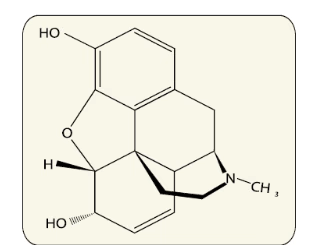 Chemical Structure of Morphine
Chemical Structure of Morphine
Cannabinoids
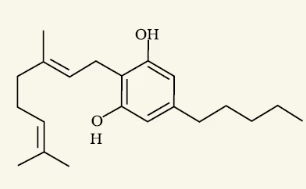 Chemical structure of Cannabinoid Molecule
Chemical structure of Cannabinoid Molecule
- Cannabinoids interact with cannabinoid receptors in the brain.
- Natural cannabinoids are obtained from the inflorescences of the plant Cannabis sativa.
- Products like marijuana, hashish, charas, and ganja are made from different parts of the cannabis plant.
- Cannabinoids are typically consumed by inhalation or oral ingestion and can affect the cardiovascular system.
 Leaves of Cannabis sativa
Leaves of Cannabis sativa
Coca Alkaloids (Cocaine)
- Coca alkaloids, such as cocaine, are obtained from the coca plant Erythroxylum coca.
- Cocaine interferes with the transport of the neurotransmitter dopamine.
- Cocaine is usually snorted and has a potent stimulating effect on the central nervous system, producing feelings of euphoria and increased energy.
- Excessive use of cocaine can lead to hallucinations.
Hallucinogenic Plants
 Flowering Branch of Datura
Flowering Branch of Datura
- Plants like Atropa belladonna and Datura are known for their hallucinogenic properties.
- These plants have been used for various purposes, including folk medicine and religious rituals.
Abuse of Prescription Medications
- Drugs like barbiturates, amphetamines, and benzodiazepines, which are typically prescribed for conditions such as depression and insomnia, are often abused.
- Morphine, a potent sedative and painkiller, is sometimes misused despite its medical benefits.
- Hallucinogenic plants used in traditional medicine or rituals can be abused when taken for non-medical purposes or in excessive amounts.
Tobacco Use and Its Consequences
- Tobacco has been used for over 400 years and is consumed by smoking, chewing, or sniffing.
- Tobacco contains various chemical substances, including nicotine, an alkaloid that stimulates the release of adrenaline and noradrenaline, leading to increased blood pressure and heart rate.
- Smoking is linked to a higher incidence of cancers, such as lung, urinary bladder, and throat cancers, as well as bronchitis, emphysema, coronary heart disease, and gastric ulcers.
- Tobacco chewing is associated with an increased risk of oral cavity cancer.
- Smoking also raises the level of carbon monoxide(CO) in the blood, reducing the concentration of hemoglobin-bound oxygen and causing oxygen deficiency in the body.
- Despite the statutory warnings on cigarette packaging about the health risks of smoking, it remains prevalent among both the young and the old.
- Both young and old individuals need to avoid smoking and chewing tobacco due to their addictive nature and health risks.
Conclusion
- Drugs and alcohol abuse is a growing concern, particularly among the youth. Education and guidance are crucial to help young people avoid these harmful behaviors and adopt healthier lifestyles.
- Commonly abused drugs include opioids, cannabinoids, and coca alkaloids, which are often derived from plants. Opioids like heroin are depressants that slow down bodily functions. Cannabinoids, obtained from the cannabis plant, affect the cardiovascular system, while coca alkaloids like cocaine are stimulants that affect the central nervous system.
- Tobacco use, whether through smoking or chewing, poses significant health risks and is linked to various cancers and other diseases. Despite the known dangers, tobacco use remains prevalent, highlighting the need for continued efforts to combat drug and alcohol abuse.
Adolescence and Drug/Alcohol Abuse
Adolescence refers to both a period and a process during which a child matures in attitudes and beliefs necessary for effective participation in society. This phase, typically spanning ages 12 to 18, serves as a bridge between childhood and adulthood and is marked by significant biological and behavioral changes. It is a vulnerable time for mental and psychological development.
Key Characteristics of Adolescence
- Curiosity: Adolescents are naturally curious, which drives them to experiment with new experiences, including drug and alcohol use.
- Need for Adventure: The desire for excitement and adventure can lead adolescents to engage in risk-taking behaviors, such as substance use.
- Stress and Pressure: Academic pressures and the need to excel can contribute to stress, prompting some adolescents to seek relief through drugs or alcohol.
- Social Perception: The belief that using drugs or alcohol is "cool" or progressive, often influenced by media portrayals, can encourage substance use among youth.
- Family and Peer Influence: Unstable or unsupportive family environments, as well as peer pressure, are significant factors associated with drug and alcohol abuse in adolescents.
Initial experimentation with drugs or alcohol may stem from curiosity, but over time, some adolescents may rely on these substances as a means of escaping problems.
Addiction and Dependence
Drugs and alcohol are often used repeatedly because of their perceived benefits. However, it's crucial to recognize their inherently addictive nature. Addiction involves a psychological attachment to the positive effects, such as euphoria and temporary well-being, associated with these substances. This compels individuals to use them even when it's unnecessary or harmful.
Psychological Attachment
- Addiction is driven by a psychological attachment to the effects of drugs and alcohol, such as euphoria and a temporary sense of well-being.
- This attachment leads people to use these substances even when they are not needed or when their use becomes self-destructive.
Tolerance and Increased Intake
- With repeated use of drugs or alcohol, the body's tolerance level increases.
- This means that the receptors in the body become less responsive to normal doses and only react to higher doses, leading to greater intake and addiction.
Potential for Addiction
- Even occasional use of drugs or alcohol can set the stage for addiction.
- The addictive potential of these substances can pull users into a vicious cycle of regular use (abuse) from which it becomes difficult to escape.
Dependence and Withdrawal
- Dependence is characterized by the body's tendency to experience a withdrawal syndrome if the regular dose of drugs or alcohol is suddenly stopped.
- Withdrawal symptoms can include anxiety, shakiness, nausea, and sweating, which may be alleviated by resuming use.
- In some cases, withdrawal symptoms can be severe and even life-threatening, requiring medical supervision.
Impact on Social Behavior
- Dependence can lead individuals to ignore social norms in order to obtain sufficient funds to satisfy their drug or alcohol needs.
- This can result in various social adjustment problems and negative impacts on their personal and social lives.
Effects of Drug/Alcohol Abuse
Drug and alcohol abuse can have severe immediate and long-term consequences.
Immediate Adverse Effects
- Reckless behavior, vandalism, and violence.
- Excessive doses can lead to coma and death due to respiratory failure, heart failure, or cerebral hemorrhage.
- Combining drugs or mixing drugs with alcohol often results in overdosing and fatalities.
Warning Signs Among Youth
- Decline in academic performance.
- Unexplained absences from school or college.
- Lack of interest in personal hygiene.
- Withdrawal and isolation.
- Symptoms of depression and fatigue.
- Aggressive and rebellious behavior.
- Deteriorating relationships with family and friends.
- Loss of interest in hobbies.
- Changes in sleeping and eating habits.
- Fluctuations in weight and appetite.
Far-Reaching Implications
- Financial distress may lead the abuser to theft.
- Impact on mental and financial well-being of family and friends.
- Intravenous drug users are at higher risk of serious infections like AIDS and Hepatitis B due to sharing infected needles.
- AIDS and Hepatitis B are chronic and potentially fatal infections.
Long-term Effects
- Alcohol use during adolescence can lead to heavy drinking in adulthood.
- Chronic drug and alcohol use damages the nervous system and liver (e.g., cirrhosis).
- Drug and alcohol use during pregnancy can adversely affect the fetus.
MISUSE OF DRUGS IN SPORTS
- Narcotic analgesics in sports to relive pain.
- Anabolic steroids to increase muscle strength and bulk.
- Diuretics to promote weight loss.
- Hormones to increase aggression and athletic performance.
Side Effects of Anabolic Steroids
In Females
- Masculinization (developing male features).
- Increased aggressiveness.
- Mood swings and depression.
- Abnormal menstrual cycles.
- Excessive hair growth on the face and body.
- Enlargement of the clitoris.
- Deepening of the voice.
In Males
- Acne and increased aggressiveness.
- Mood swings and depression.
- Reduction in testicle size and decreased sperm production.
- Risk of kidney and liver dysfunction.
- Breast enlargement.
- Premature baldness.
- Enlargement of the prostate gland.
In Adolescents
- Severe facial and body acne.
- Premature closure of growth centers in long bones, leading to stunted growth.
Prevention and Control
Prevention is always better than cure. Habits like smoking, drug use, or alcohol consumption often start in adolescence. It’s important to recognize situations that might lead a young person to these habits and address them early. Parents and teachers play a crucial role in this.
Parenting and Prevention
Positive Parenting: Combining nurturance with consistent discipline in parenting is linked to a lower risk of substance abuse.
- Avoiding Peer Pressure: Respect each child's unique personality and choices. Avoid pushing them beyond their limits in studies, sports, or other activities.
- Education and Counseling: Teach children how to handle problems, stress, disappointments, and failures. Encourage them to engage in positive activities like sports, reading, music, yoga, and other extracurricular pursuits.
- Seeking Help: Encourage children to seek help from parents and peers when facing challenges. Trusted friends can also provide support. This helps in venting feelings of anxiety and guilt.
- Identifying Warning Signs: Parents and teachers should be vigilant in recognizing warning signs of substance use. Friends should also feel comfortable reporting concerns about a peer's drug or alcohol use. Early identification can lead to appropriate interventions.
- Professional Help: Qualified psychologists, psychiatrists, and de-addiction rehabilitation programs are available to assist individuals struggling with substance abuse. With the right support, individuals can overcome these challenges and lead healthy, normal lives.
|
90 videos|490 docs|209 tests
|















